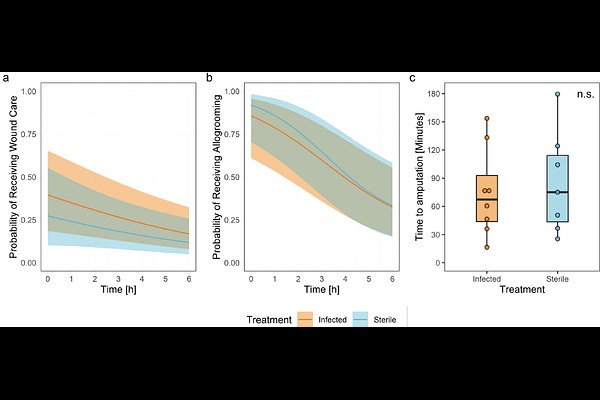Better Safe Than Sorry: Leg Amputations as a Prophylactic Wound Care Behaviour in Carpenter Ants

Better Safe Than Sorry: Leg Amputations as a Prophylactic Wound Care Behaviour in Carpenter Ants
Fujimoto, S.; Oviedo, J. J. L.; Seibel, F.; Puille, L.; Hausmann, R.; Corcoran, E.; Schmitt, T.; Frank, E. T.
AbstractAnimals often sustain injuries, which are susceptible to lethal infections. In social insects, wound care behaviours have evolved to reduce these risks. But the limits of wound care behaviours remain unclear. Here we investigated the wound care behaviours of the ant Camponotus maculatus. Our findings show that amputation of legs infected with Pseudomonas aeruginosa significantly reduced mortality. However, nestmates do not differentiate between infected and sterile injuries, providing similar treatments regardless of infection. Even though we show that early amputation correlates with higher survival rates, nestmates amputate indiscriminately on legs with fresh or old wounds. Additionally, cuticular hydrocarbon profiles differed between ants with infected or sterile wounds only 24 hours post-injury, a timepoint when amputations are no longer effective. We propose that C. maculatus workers perform prophylactic amputations regardless of injury state or age. This is in sharp contrast to previous studies which showed clear capabilities to treat infected wounds differently in ants using antimicrobial compounds. This work therefore shows the limits of wound care behaviours in social insects, allowing us to better understand the evolutionary drivers of this unique behaviour.